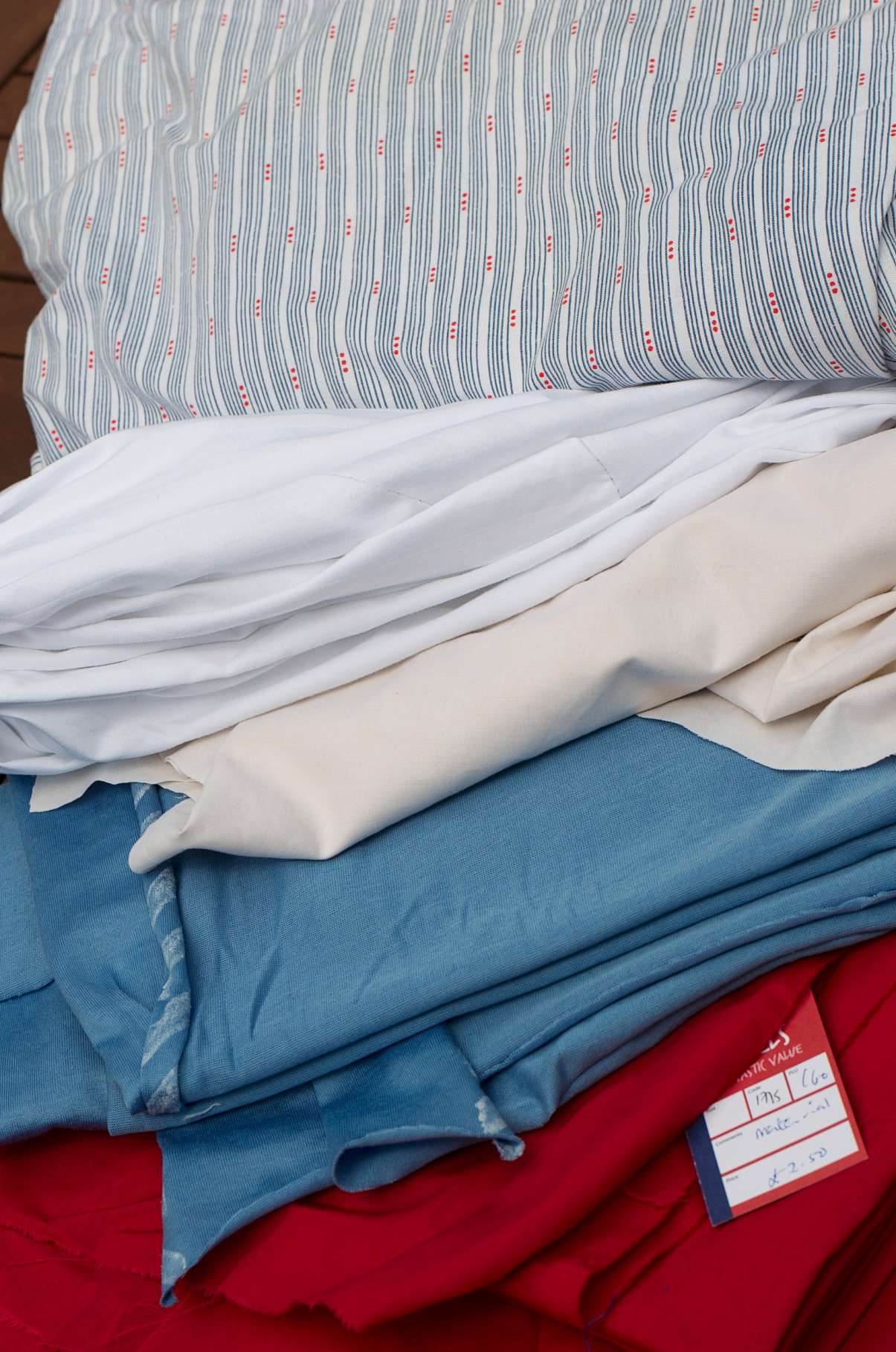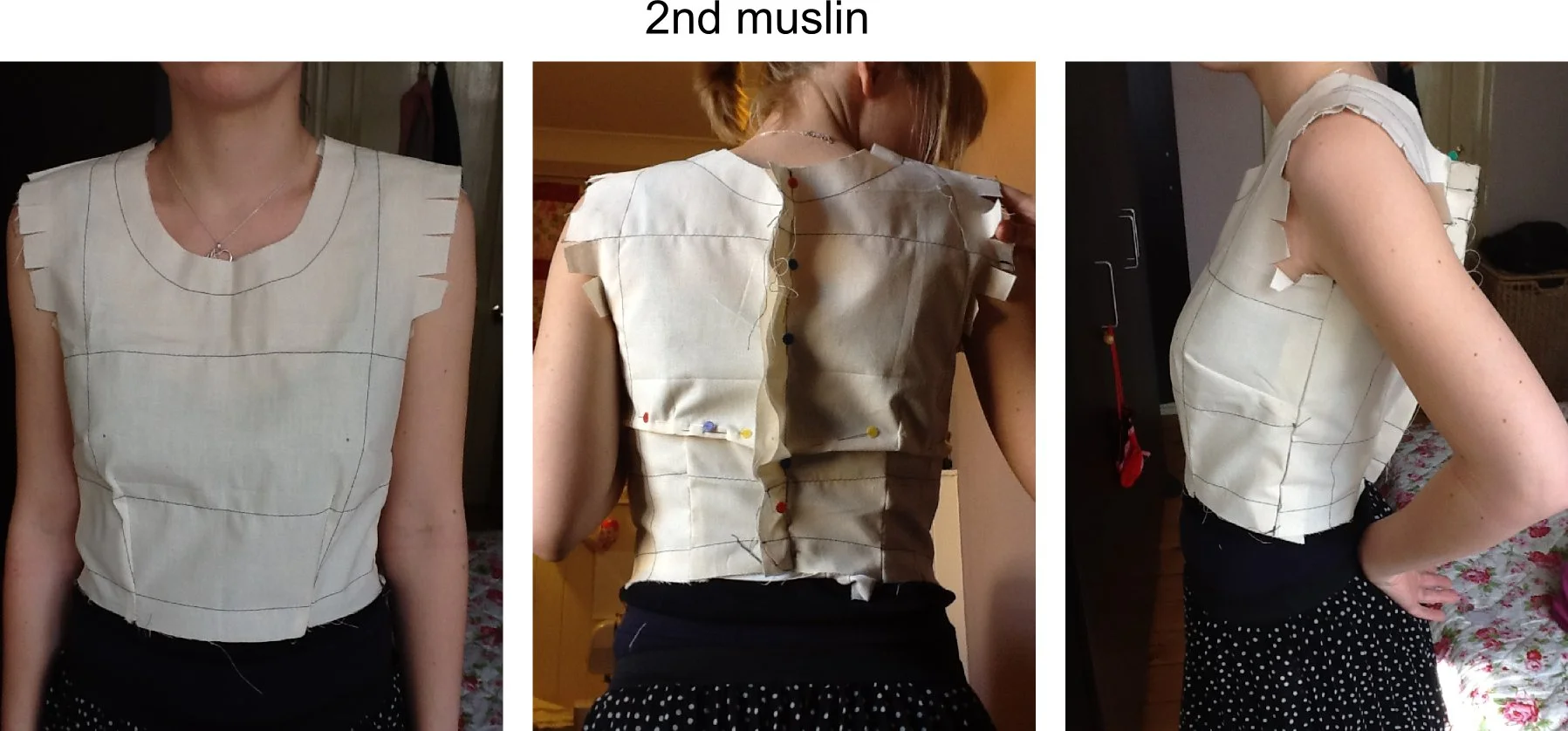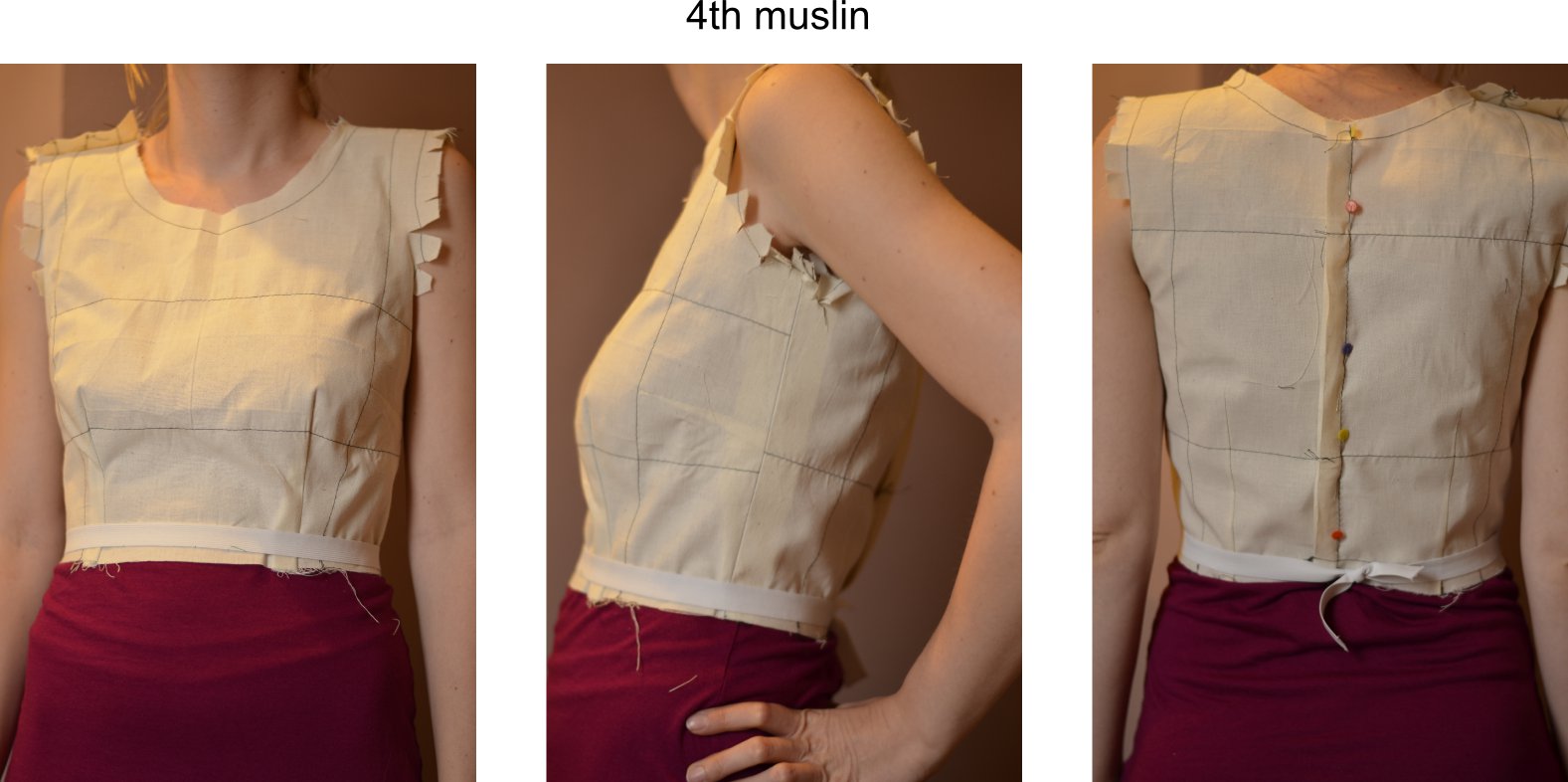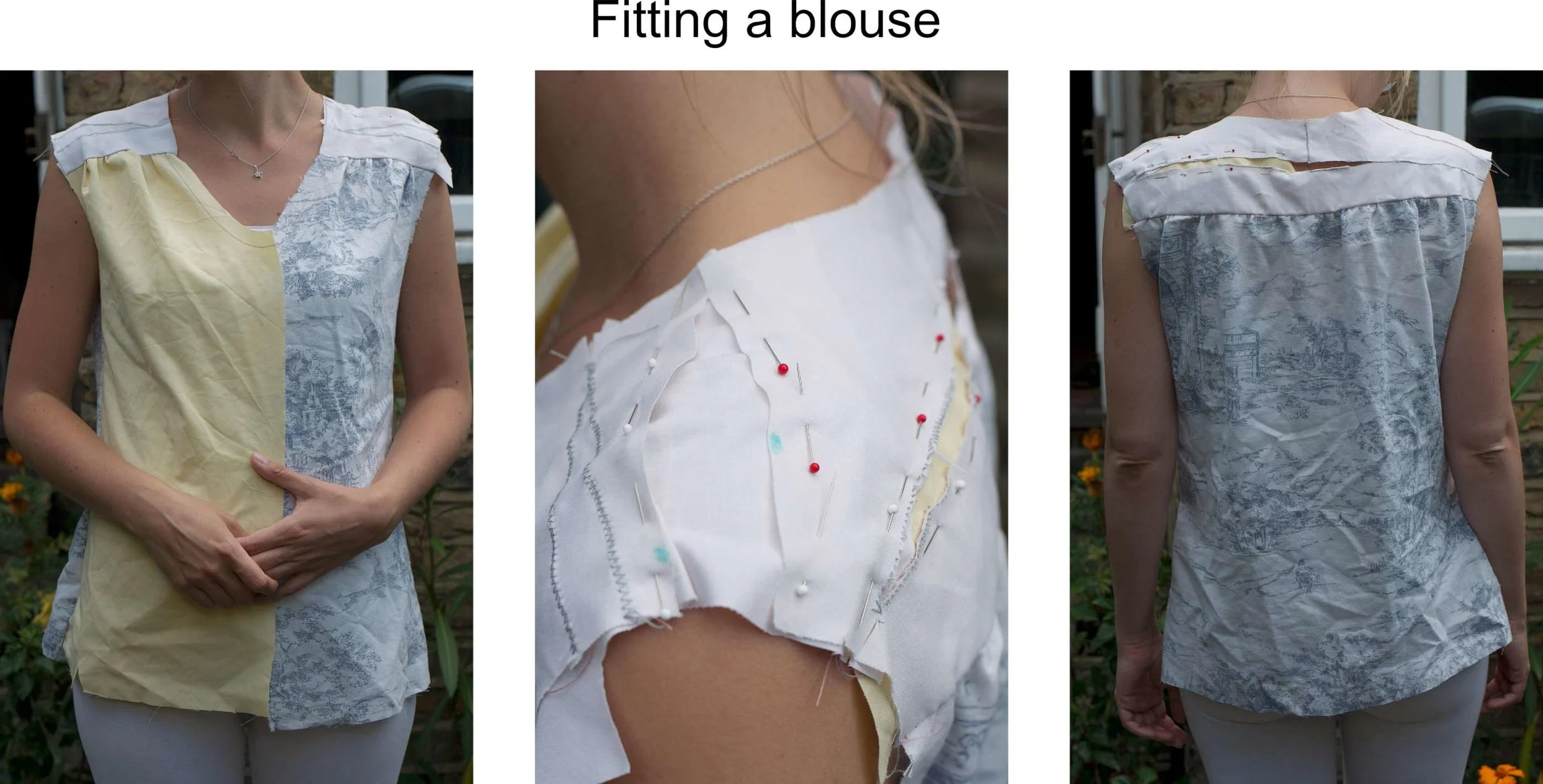Notionally Speaking: Muslins
Are you ready for the next Notionally Speaking post, where a blogger picks a sewing related word at random from a predefined list and writes a post inspired by that word? I hope so as Daniela from Ela Sews and Doesn't Sleep talks muslins. I had to smile when Daniela chose this word as she is well know for her exceptional fitting and patience during this process, including creating five (yes five!) in the past. So grab yourself a cup of tea and let us know your feelings about muslins.
Do you hate or love making muslins (aka toile)? When I started sewing I hated them, because they took so much time and then when you are done they land in the bin. Now, one and a half years later, I still don’t love them but I have recognized that they are essential to sew a garment that fits me and that I am happy to wear loads of times. For this post, I thought it is a good idea to answer some of the questions I had when I started to make muslins. If you have any more suggestions please share and comment!
Thanks a lot Claire for allowing me to babble about muslins.
Muslin?
Muslin can be either a test garment (=toile) or a woven cotton fabric. I’m going to talk about the muslin as a toile.
Why bother with a muslin when you can directly start with your fashion fabric?
There are different reasons. Maybe you make a pattern for the first time and are not sure if the style of the garment suits you. Maybe you are one of those people who need to adjust the pattern to get a great fit. Maybe you want to try a new sewing technique. Making a muslin will give you more confidence when sewing the real thing.
What fabric should you use for your muslin and where can you get it?
The rule of thumb is to use a fabric that will have similar qualities as you fashion fabric. I usually use different-weight cottons and polyesters. I tend to go to Charity shops and buy old bed sheets, duvet covers and curtains. You can get king size duvet covers for £4 already and that means you will have a massive piece of fabric that will last a long time (except if you are muslining a men’s shirt). Sometimes you are lucky and can even find fabrics in these Charity Shops. You can also buy cheap fabrics from fabric stores (look out for sales), ask family and friends, use any leftover fabrics you have from your projects or order online. But beware, I ordered muslin (aka cotton fabric) once from ebay and got very stiff fabric. It felt almost like canvas. Also stay away from butter muslin. You don’t want to make a test garment with it (ask me how I know---but it works great as a press cloth), because it is used to drain cheese!
Pre-washing and cutting your muslin
Good news, you don’t have to prewash your muslin fabric! But give it a good iron to get out any wrinkles (if you skip this step, your fabric pieces might grow on you when the wrinkles start to smooth out). Then lay out the pattern pieces on grain--which might be difficult on an old bedsheet. Advice: tear the sheet to get a straight edge. It is important to cut the pieces on the grain so that you can be sure the fitting problems you are spotting are from wrong fit and not wrong grain. You can add some horizontal and vertical lines to your cut pieces by either using a sharpie or a straight stitch. These lines will give you an idea where your fitting problems are.
For example a horizontal line that goes up over your belly means you need more belly space. I’m not going to cover any fitting techniques, but can recommend reading “Fit for real people” by Palmer and Pletsch and a free fitting guide from the Florida Cooperative Extension Service. There are many techniques out there and you just have to find out what is the best for you.
Sewing your muslin
Just use a long basting stitch on your sewing machine. This way you can easily rip out the stitches. Also there is no need to make the whole garment from muslin. For example, if you make a dress with a circle or gathered skirt you can only make the bodice. But: I would always add the sleeves as they can change the fit of the bodice quite a lot.
Working with your muslin
When working with a muslin have your shears, stripes of fabric, sharpie and pins ready---because you are going to cut into this fabric and try out some alterations. On the photo below, you can see one of my muslins for a blouse. I needed a square shoulder adjustment. Thus I cut the muslin at the position where I needed the additional fabric and pinned a strip of fabric there. I then stitched fabric and muslin together with a zigzag stitch to see better if my adjustment was working.
I added even more fabric by pinning it in.
Fitting buddies
It is difficult, but possible, to fit the muslin by yourself. Do it in front of a big mirror. When fitting a bodice, sew a zipper in and with some wiggling you might be able to close it. You can also tie a string to the zipper
to pull it up and down a bit easier. Look out for a fitting buddy, which can also be family and friends. My boyfriend helps me with the pinning and sometimes even with the adjustments when I’m explaining to him how to do it.
How many muslins should I make?
That depends on how well fitted you want your garments to be and also how many adjustments you have to make. I made as many as five and as few as one! It can become very frustrating at some point, because you have the feeling your adjustments are just not working. Don’t give up, it will be worth it.








